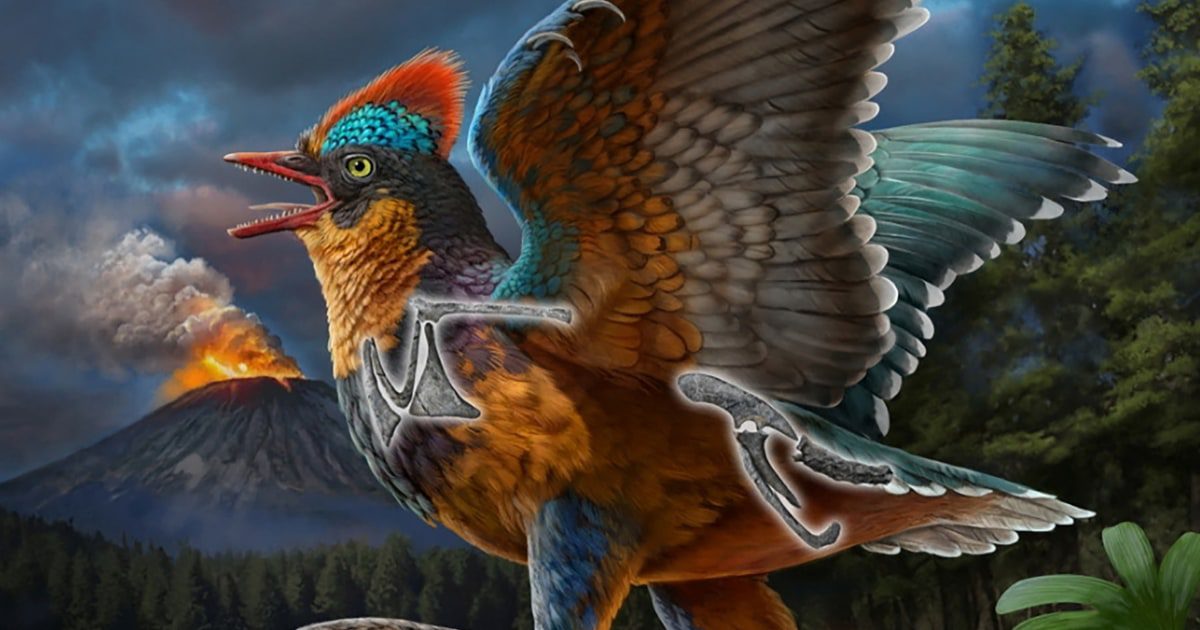
Researchers have uncovered a significant Jurassic bird fossil in southeastern China, shedding new light on the evolution of birds.
The newly identified species, Baminornis zhenghensis, which is approximately the size of a quail, soared through the skies around 150 million years ago during the Jurassic era. A recent study published in the journal Nature indicates that this discovery makes it one of the earliest known birds, alongside the renowned Archaeopteryx, which was unearthed in Germany in 1862 and is similarly aged.
“For over a century and a half, Archaeopteryx has been the sole representative of Jurassic avian life,” stated Steve Brusatte, a paleontologist from the University of Edinburgh, who provided a commentary accompanying the study.
“Throughout that time, it has remained the only indisputable bird fossil from the Jurassic Period,” he shared with NBC News via email.
Brusatte noted that while some other bird-like fossils from the Jurassic had been discovered, there was a perplexing void in the fossil record. If Archaeopteryx was already flying, then surely other birds existed as well—yet their fossils remained elusive.
The 2023 find of Baminornis in Zhenghe County, Fujian province, marks a pivotal advancement in knowledge, effectively becoming the “second indisputable bird from the Jurassic Period,” he explained.
In contrast to Archaeopteryx, which had a long, slender tail reminiscent of a velociraptor, Baminornis featured a shorter tail with some vertebrae fused into a pygostyle—an important aerodynamic structure that shifts the center of mass toward the wings, much like the layout seen in contemporary birds that enhance their flight capabilities.
Prior to the Baminornis discovery, similar short tails had only been identified in birds known to have lived approximately 20 million years later, including Eoconfuciusornis and Protopteryx.
“What excites me the most is that Baminornis represents a more advanced bird compared to Archaeopteryx and would have had significantly enhanced flying abilities,” said Brusatte.
This newfound species exhibited anatomical complexity beyond that of Archaeopteryx, which Brusatte described as a more “primitive” bird with claws and sharp teeth reminiscent of its dinosaur heritage.
Archaeopteryx is considered a vital piece of evidence supporting the theory that today’s birds evolved from dinosaurs—a spectacular example of a species caught in the process of evolution, akin to a snapshot in time, he added.
The stark contrast between these two ancient birds, discovered over 5,500 miles apart, has compelled the team behind the Nature study to revise the timeline of avian evolution, suggesting it may have commenced millions of years earlier than previously believed, now estimated at around 172-164 million years ago.
In addition to numerous fossils of aquatic and semi-aquatic creatures, the Zhenghe Fauna collection has yielded at least three avialan fossils thus far. Researchers believe this collection holds significant potential to enhance understanding of early bird diversification and to bridge a vital gap in the evolutionary history of terrestrial ecosystems towards the end of the Jurassic period.
While the Baminornis fossil preserved much of the skeletal structure, its feathers were not intact, leaving uncertainties regarding the size and composition of its wings. Additionally, the absence of a skull limits insights into this bird’s dietary habits.
Nonetheless, “Baminornis indicates that a variety of bird species existed during the Jurassic era, each adopting different flight strategies,” Brusatte concluded.









